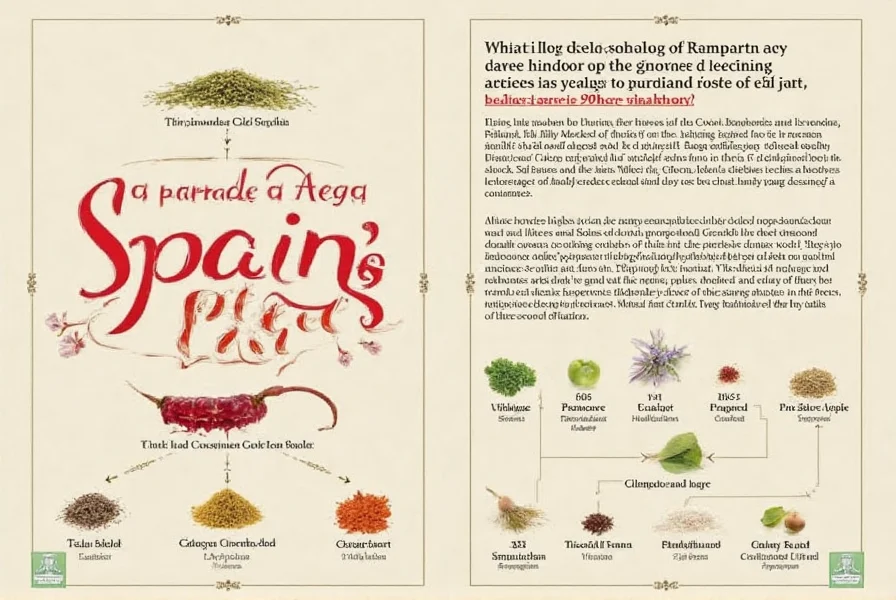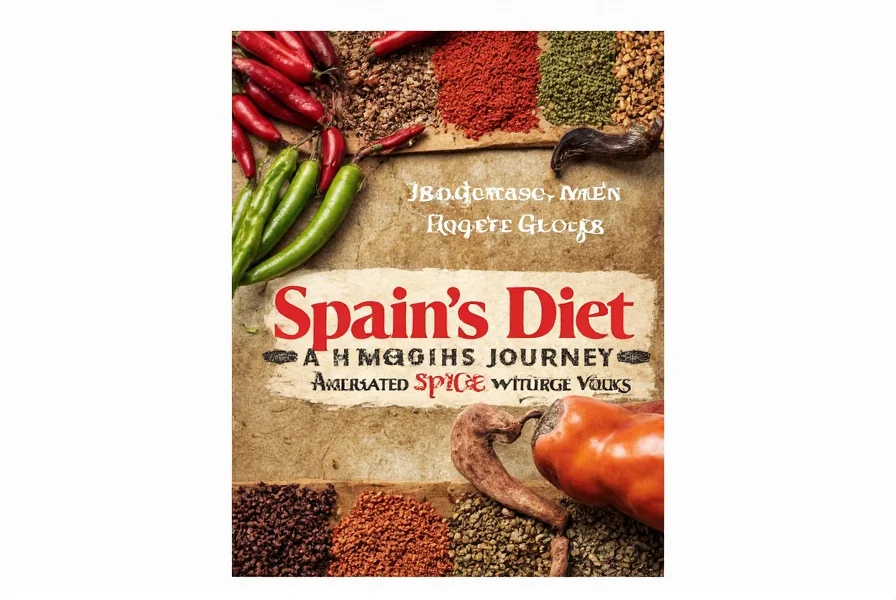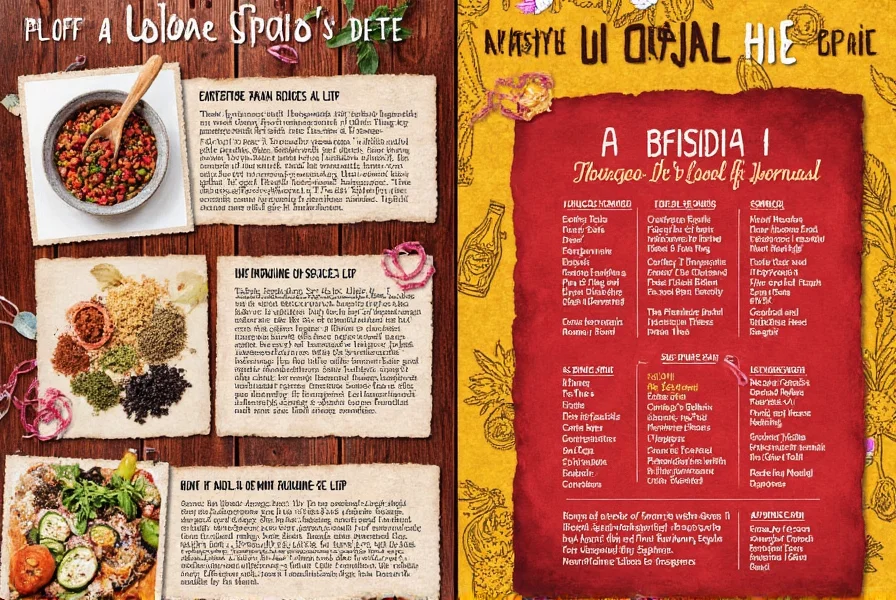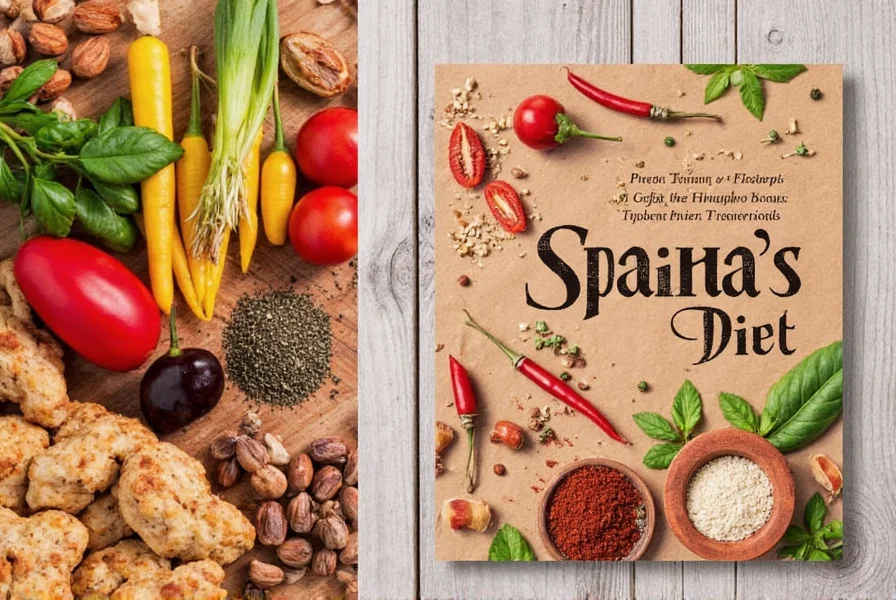Spain’s Diet: A Flavorful Journey Through Global Spice Traditions
Table of Contents
Introduction to Spain’s Diet
Spain’s diet is a vibrant tapestry woven with the rich threads of history, geography, and culture. Known for its emphasis on fresh ingredients, olive oil, and a variety of spices, Spanish cuisine offers a unique blend of flavors that reflect the country’s diverse regions. From the coastal towns of Andalusia to the mountainous landscapes of the north, each area contributes its own spice profile to the national culinary identity.

The Mediterranean climate plays a significant role in shaping Spain’s diet, encouraging the use of seasonal produce and natural preservation methods. The use of spices is not just about flavor; it’s also about tradition and the art of cooking. Whether you’re enjoying a plate of paella or savoring a glass of sangria, the spices used in these dishes tell a story of heritage and innovation.
Spices in Spanish Cuisine
When we think of Spanish cuisine, certain spices immediately come to mind—like saffron, paprika, and garlic. These ingredients are staples in many traditional dishes and add depth and complexity to the flavors. Let’s explore some of the most commonly used spices in Spain:
- Saffron: Often referred to as the “red gold,” saffron is a key ingredient in paella and other seafood dishes. It adds a distinct aroma and a golden hue to the food.
- Paprika: This spice is used in both sweet and smoked varieties. It’s essential in chorizo and other cured meats, giving them their signature flavor.
- Garlic: A fundamental component of Spanish cooking, garlic enhances the taste of soups, stews, and sauces.
- Oregano: Commonly found in tapas and tomato-based dishes, oregano brings a robust, earthy flavor.
- Cumin: Used in meat dishes and stews, cumin adds warmth and a slightly nutty taste.

These spices are not only integral to the flavor of Spanish dishes but also reflect the country’s historical trade routes. For example, saffron was introduced by the Moors, while paprika has roots in the Americas after the Columbian Exchange. Understanding the origins of these spices can deepen your appreciation of Spanish cuisine.
Practical Tips for Exploring Spain’s Spices
If you're eager to bring the flavors of Spain into your kitchen, here are some practical tips to get started:
- Start with the basics: Begin with a few essential spices like saffron, paprika, and garlic. You can always expand your collection later.
- Experiment with combinations: Don’t be afraid to mix different spices in your recipes. Spanish cuisine often uses layering techniques to build complex flavors.
- Use fresh ingredients: Fresh herbs and vegetables can elevate the taste of your dishes. Try using local produce whenever possible.
- Learn from authentic recipes: Look for traditional Spanish recipes that highlight specific spices. Cooking from these recipes can help you understand how to use them effectively.
- Try different types of paprika: Smoked paprika adds a deep, smoky flavor, while sweet paprika is more mild. Experiment with both to see which you prefer.

One fun way to explore Spain’s spices is by visiting a local market. Many markets offer a wide range of spices, and you can ask vendors for recommendations based on your cooking style. Additionally, joining a cooking class or watching online tutorials can provide valuable insights into how these spices are used in authentic Spanish dishes.
Buying Guide: Must-Have Spices for Your Kitchen
If you're looking to build a well-rounded spice collection inspired by Spain’s diet, here are some must-have items:
| Spice | Features | Advantages | Use Cases | Target Audience | Suitable Occasions |
|---|---|---|---|---|---|
| Saffron | Golden threads, high value, intense aroma | Enhances color and flavor, adds luxury to dishes | Paella, risotto, seafood dishes | Chefs, home cooks, food enthusiasts | Special occasions, dinner parties |
| Paprika | Available in sweet, smoked, and hot varieties | Offers versatility, adds depth to dishes | Chorizo, stews, grilled meats | Home cooks, grill enthusiasts | Weekend meals, gatherings |
| Garlic | Essential for flavor, available in fresh or powdered form | Enhances taste, easy to use | Soups, sauces, roasted vegetables | All levels of cooks | Daily meals, family dinners |
| Oregano | Earthy, aromatic, available in dried or fresh | Adds robust flavor, pairs well with tomatoes | Tapas, tomato-based dishes, marinades | Food lovers, casual cooks | Casual gatherings, weeknight meals |
| Cumin | Warm, nutty, often used in meat dishes | Provides depth, complements strong flavors | Stews, meatballs, chili | Meat lovers, adventurous cooks | Barbecues, family dinners |

When purchasing spices, look for high-quality products from reputable sources. Organic options are often preferred for their purity and flavor. If you're new to using spices, start with small quantities to avoid overpowering your dishes. Also, consider buying whole spices and grinding them yourself for a fresher taste.
For those who enjoy cooking with spices, there are many online retailers that offer a wide selection of Spanish spices. Some popular brands include La Tienda, The Spanish Table, and Mercado de la Luz. These stores provide detailed descriptions of each product, helping you make informed choices based on your preferences and needs.
Conclusion
Spain’s diet is a celebration of flavor, tradition, and cultural heritage. The use of spices in Spanish cuisine is not just about enhancing taste—it’s about storytelling and connecting with the past. By exploring the spices that define this rich culinary tradition, you can bring the essence of Spain into your own kitchen.

Whether you're a seasoned cook or a curious enthusiast, the world of Spanish spices offers endless possibilities for creativity and discovery. So why not start experimenting today? With the right spices and a little bit of imagination, you can recreate the flavors of Spain in your own home. Remember, the journey of a thousand miles begins with a single spice.
As you continue to explore global spice traditions, keep an open mind and a curious palate. Each spice has a story, and every dish has a purpose. Embrace the adventure, and let your taste buds guide you through the colorful world of Spanish cuisine.











 浙公网安备
33010002000092号
浙公网安备
33010002000092号 浙B2-20120091-4
浙B2-20120091-4